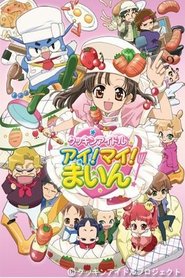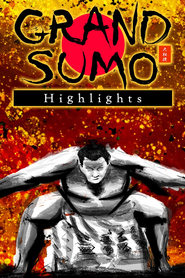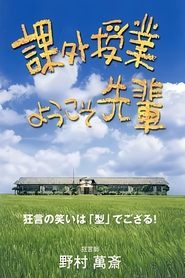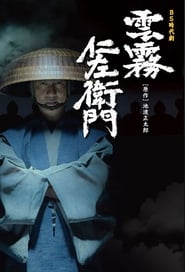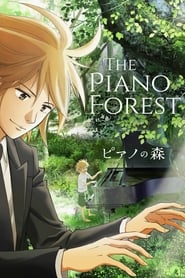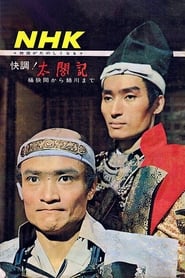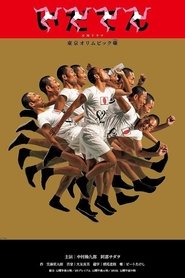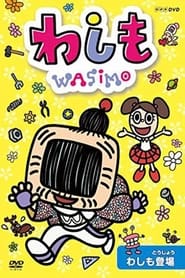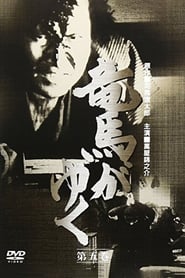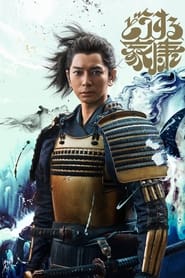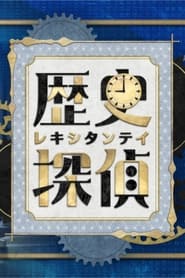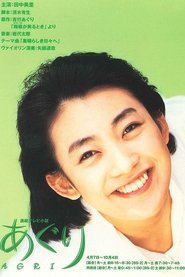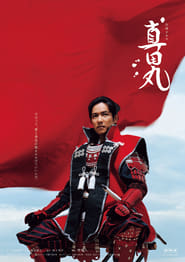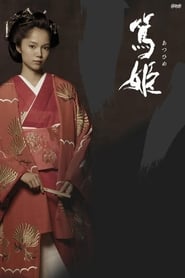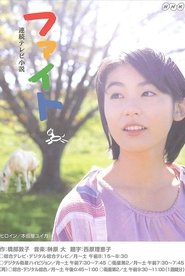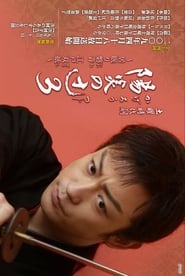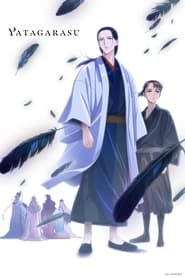Nhk TV Series - Page 4
-
GRAND SUMO Highlights
2020
star 6.4The best of today's sumo! Enjoy daily highlights of this dynamic sport with background info and play-by-play commentary adding to the excitement! -
Kumokiri Nizaemon
2013
star 8.5During the Kyoho period in the reign of Tokugawa Yoshimune, there is a gang of thieves active not just in Edo but also the Tokaido and the Nakasendo, and all across the Kansai region, stealing large sums of money with skillful techniques. They only target the very wealthy and never kill or injure people. They appear with the clouds and disappear like the mist. On the night that the beautiful Ochiyo is to become the bride of a dry goods dealer, a large amount of money hidden inside the shop is stolen. The gang disappears without injuring anyone. It was a two-year plan to marry Ochiyo off so that she could bring them in. The leader of this gang is Kumokiri Nizaemon, the greatest bandit of all time. He keeps a rein on his highly-skilled and notorious followers Nanabake no Ochiyo, Kinezumi no Kichigoro, Subashiri no Kumagoro, Ingakozo Rokunosuke and others. -
The Piano Forest
2018
star 6.1A tranquil tale about two boys from very different upbringings. On one hand you have Kai, born as the son of a prostitute, who's been playing the abandoned piano in the forest near his home ever since he was young. And on the other you have Syuhei, practically breast-fed by the piano as the son of a family of prestigious pianists. Yet it is their common bond with the piano that eventually intertwines their paths in life. -
Taikouki
1965
Taikouki
1965
Based on the life of Hideyoshi Toyotomi (February 2, 1537 – September 18, 1598) a Sengoku period daimyo who unified Japan. -
Idaten: Tokyo Olympics Story
2019
star 7.8Traces Japan’s history with the Olympic games and the 1964 Tokyo Olympics for viewers before Tokyo hosts the event again in 2020. The first half tells the story of marathon runner Kanakuri Shiso, who became one of the first Japanese nationals to participate in the Olympics in Stockholm in 1912. The second half features Tabata Masaji, the coach who laid the foundations of Japanese swimming and helped bring the games to Tokyo for the first time in 1964. -
Washimo
2014
Washimo
2014
Hiyori's grandmother died. To stop her crying all day and every day, Hiyori's father built a humanoid robot called Washimo, that looks like her granny, complete with dentures. It walks faster than a snail but slower than a rhinoceros beetle; in fact, however, it can outrun a bullet train. -
Ryoma ga Yuku
1968
Ryoma ga Yuku
1968
The chronicles of Sakamoto Ryoma, a pre-revolutionary who helped shape the face of modern Japan. In order to study swordsmanship, Ryoma heads for Edo where he meets many people who influence his thinking. He becomes close friends with men like Katsu Kaishu and Saigo Takamori and later establishes a naval training school in Kobe. Ryoma's controversial political views make him a target for shogunate assassins but his fervent belief in a classless society helps forge the Choshu-Satsuma alliance which ultimately brings about the Meiji Restoration. -
Come Come Everybody
2021
Come Come Everybody
2021
Come Come Everybody is a Japanese television drama series and the 105th NHK Asadora series, following Okaeri Mone.. It depicts the lives of three generations of women who have close links to the English lessons on radio which began in 1925. -
What Will You Do, Ieyasu?
2023
star 7.7The drama series depicts the life of Tokugawa Ieyasu (January 31, 1543 – June 1, 1616). Takechiyo (who later becomes Tokugawa Ieyasu) was born as the son of a poor and powerless daimyo. Takechiyo lost his father during a war. He grew up lonely and away from his mother. Takechiyo didn't have a clue about what his future would hold. He then has a dramatic meeting with the young Oda Nobunaga. -
History Detective
2021
star 10Set up as a detective agency, with Jiro Sato playing the lead investigator role, this program explores Japanese history events, personas, and mysteries through on-site inspections, latest scientific discoveries, as well as experiments and simulations. -
Agri
1997
Agri
1997
The 56th NHK Asadora Renzoku Drama is Agri. Story's settings include Okayama and Tokyo (Ichigaya). This renzoku chronicles the life of a Showa period hairdresser, and is based on a true life story of Moshizuki Agri. Agri has worked for over 70 years as a beautician. She is a successful business woman who survived the war by becoming a farmer. During the war, going to the beauty salon was considered a frivolity, so many such businesses went bankrupt as Japan suffered from the energy spent as all the yen was fueled into the war effort. -
Sanadamaru
2016
star 7.9Spanning over 50 episodes, we follow the historical fiction of the Sanada clansmen as they plotted and fought their ways to survive the changing political alliances during the Warring States Period of Japan. -
Atsuhime
2008
star 9The 47th NHK Taiga Drama is a life story of Princess Atsu, who was born in Kagoshima Prefecture, then called Satsuma, and became the wife of Tokugawa Iesada, the 13th shogun of the Tokugawa shogunate. She accedes to the highest rank in Ooku, the inner palace of the Edo castle where women related to the reigning shogun resided. Iesada dies soon after their marriage and Atsuhime assumes the name Tenshoin at the age of 23. She exerts herself for the Tokugawa clan and for the nation during the upheaval in the Meiji Restoration, headed by those from Satsuma. -
Fight
2005
Fight
2005
Fight is a story about fifteen year old Yuu, whose family becomes separated after an incident involving her father's spring factory. With her undying spirit to "fight" off every obstacle arising in life, Yuu maintains her positive attitude and moves forward in hopes of the day when her family will reunite again. -
宇宙人ピピ
1965
宇宙人ピピ
1965
-
Kagerou no Tsuji
2007
Kagerou no Tsuji
2007
Sakazaki Iwane is a ronin who spends idle days in Edo. Until a few months ago, he was a promising son and successor to a powerful family in Bungo. He has came back to Edo, where he lived for a while for swordplay training with his two best friends, after a tragedy in the three's home domain—both of the two friends died, one of them killed by Iwane by command of the domain lord's chief retainer. Iwane left his home for Edo, leaving behind his fiancée, a sister of the friend he killed. Eventually, Iwane detects the conspiracy behind the deaths of the two friends and struggles to reform his domain. -
YATAGARASU: The Raven Does Not Choose Its Master
2024
star 8.4Welcome to Yamauchi, a world inhabited by the Yatagarasu, a race of three-legged ravens who shapeshift into humans. The land is divided into four regions—North, South, East, and West—each ruled by a noble family. Yukiya, the son of a leader in the North, is shocked by a call to attend to the Imperial Prince. Murder, mysteries, and an invasion from an unexpected enemy await in this epic fantasy.
